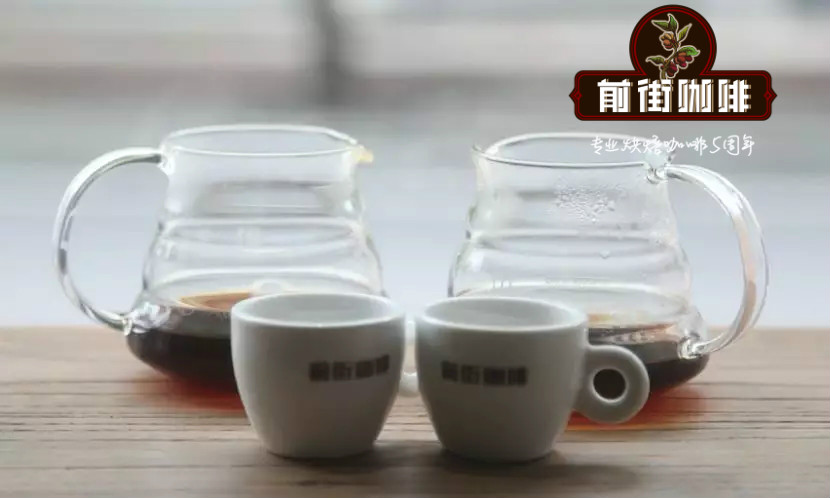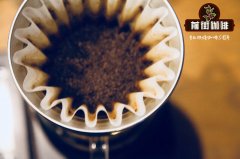How do Burundian coffee beans taste? how much is Burundian coffee? is a cup of Burundian coffee good?

Professional coffee knowledge exchange more coffee bean information please follow the coffee workshop (Wechat official account cafe_style)
Burundi is located south of the equator in east-central Africa. It is bordered by Rwanda to the north, Tanzania to the east and south, Congo (Kinshasa) to the west, and Lake Tanganyika to the southwest. There are many plateaus and mountains in the territory, most of which are composed of the plateau on the east side of the East African Rift Valley, with an average elevation of 1600 meters above sea level, which is known as the "mountain country". More than half of them are located on the famous Lake Lake Tanganyika. The capital is Bujumbura. The lakeside and river valleys in the west and the savanna climate in the east; the tropical mountain climate in the central and western regions. The annual average temperature is 20-24 ℃, with a maximum of 33 ℃. The heavy rainy season is from March to May, the light rainy season is from October to December, and the other months are dry season.
Burundi has the most diverse and successful coffee industry in the world, and has its own characteristics. Burundian coffee beans were introduced by Belgian colonists in 1930 and are now grown only on small farms. Unfortunately, many of these farms are on the border with war-torn Rwanda, putting pressure on coffee production. Almost all Burundian coffee beans produced in Burundi are Arabian coffee beans, while coffee trees in Ngozi are planted at an altitude of more than 1200 meters. Burundian coffee beans are fragrant and have excellent acidity, and most of the products are exported to the United States, Germany, Finland and Japan.
Burundian coffee beans bear a striking resemblance to neighboring Rwanda, where coffee from the two countries is often confused. Burundian coffee beans are mainly grown in bourbon, with traditional wet processing of coffee cherries. The main characteristics of its fine coffee are elegant sweetness and bright citrus aroma. This batch belongs to bourbon species micro batch.
[Burundian Champion processing Plant] is located at the Mardadi peak of the Panjia processing plant in Cabuye District, Cajun Province, with a very high altitude, even a mountain area of more than 2000 meters, with fertile soil and gravelly soil, which is very suitable for coffee growth. it is recognized as the best coffee processing plant in Burundi.
Bean parameters:
Country: Burundi
Growth: 1750 m
Production area: Kayanza Kabuye
Baking degree: medium baking
Treatment method: traditional wet treatment
Variety: bourbon species
Processing plant: Parnjia processing plant
Flavor: sour citrus, lemon, orange, almond aromas
Taste: citrus acidity, lemon, orange, almond aromas, tangerine peel aromas, clean, round and balanced with a long finish.
Qianjie coffee Burundian coffee hand-brewed reference
Stew with V60 filter cup, 15g powder and 30g water for 35 seconds
89-90 degrees water temperature extraction, 1:15, medium and fine grinding of small Fuji 4

The second time water injection to 140ml cut off water, wait for the water to drop and then slowly inject water
The speed is uniform and the water level should not be too high
Water injection again until 225ml stops, extraction time 2:15 seconds ~

When brewing, it quickly brings out the attractive aroma of citrus, and feels the taste of citrus black tea and sucrose after the entrance.
Burundian coffee bean brand recommendation
Burundian coffee beans roasted on Qianjie Coffee are fully guaranteed in terms of brand and quality. And more importantly, the performance-to-price ratio is extremely high, a pack of 227 grams, the price is only 85 yuan. According to the calculation of 15 grams of powder per cup of coffee, a bag of coffee can make 15 cups of coffee for less than 6 yuan each, which is recommended by conscience compared to the price of tens of yuan a cup sold in a coffee shop.
END
Important Notice :
前街咖啡 FrontStreet Coffee has moved to new addredd:
FrontStreet Coffee Address: 315,Donghua East Road,GuangZhou
Tel:020 38364473
- Prev

How can Ethiopian coffee beans be roasted and tasted best? Is Huakui 2.0 coffee beans cost effective?
Professional coffee knowledge exchange more coffee bean information Please follow the coffee workshop (Wechat official account cafe_style) recently, we like a bean very much, [Sakui Coffee beans] how did the name of Sakui Coffee beans come from? In 2017, Ethiopia's DW Raw Bean Company sent their coffee beans to TOH (the Taste Of H), a competition hosted by the African Coffee Association.
- Next

How do you drink Burundian coffee? How much is the Burundian coffee bean by hand?
Professional coffee knowledge exchange more coffee bean information please follow the coffee workshop (Wechat official account cafe_style) brief introduction of Burundian coffee bean producing areas Burundi, the heart of Africa. According to the statistics of the World Bank in 2011, about 600000-800000 families in Burundi depend on coffee for a living, and coffee is the core of Burundi. Bloom
Related
- Detailed explanation of Jadeite planting Land in Panamanian Jadeite Manor introduction to the grading system of Jadeite competitive bidding, Red bid, Green bid and Rose Summer
- Story of Coffee planting in Brenka region of Costa Rica Stonehenge Manor anaerobic heavy honey treatment of flavor mouth
- What's on the barrel of Blue Mountain Coffee beans?
- Can American coffee also pull flowers? How to use hot American style to pull out a good-looking pattern?
- Can you make a cold extract with coffee beans? What is the right proportion for cold-extracted coffee formula?
- Indonesian PWN Gold Mandrine Coffee Origin Features Flavor How to Chong? Mandolin coffee is American.
- A brief introduction to the flavor characteristics of Brazilian yellow bourbon coffee beans
- What is the effect of different water quality on the flavor of cold-extracted coffee? What kind of water is best for brewing coffee?
- Why do you think of Rose Summer whenever you mention Panamanian coffee?
- Introduction to the characteristics of authentic blue mountain coffee bean producing areas? What is the CIB Coffee Authority in Jamaica?

